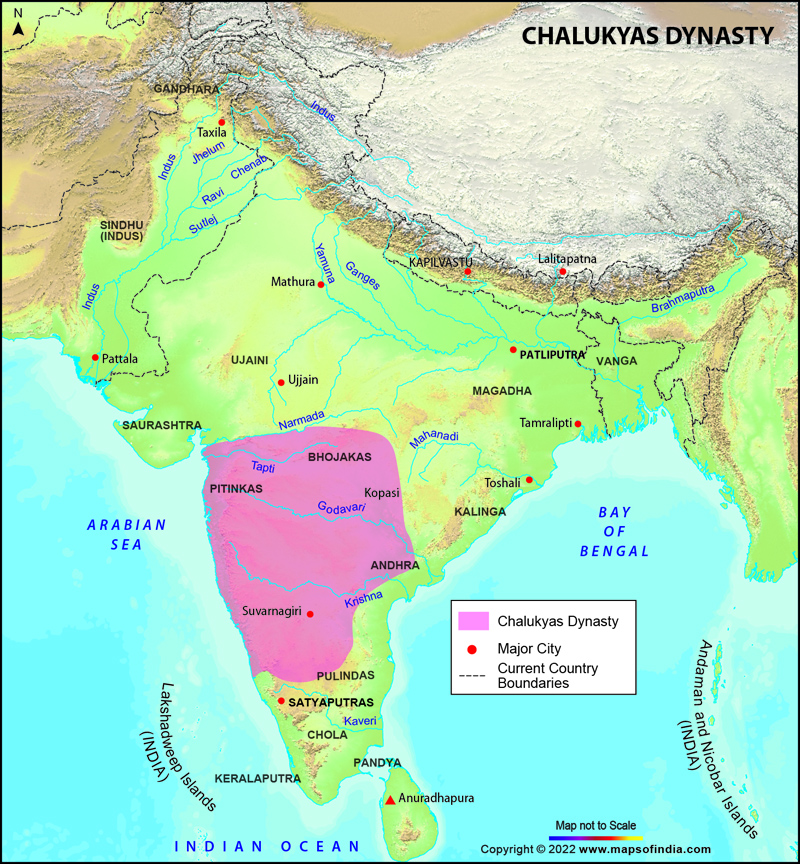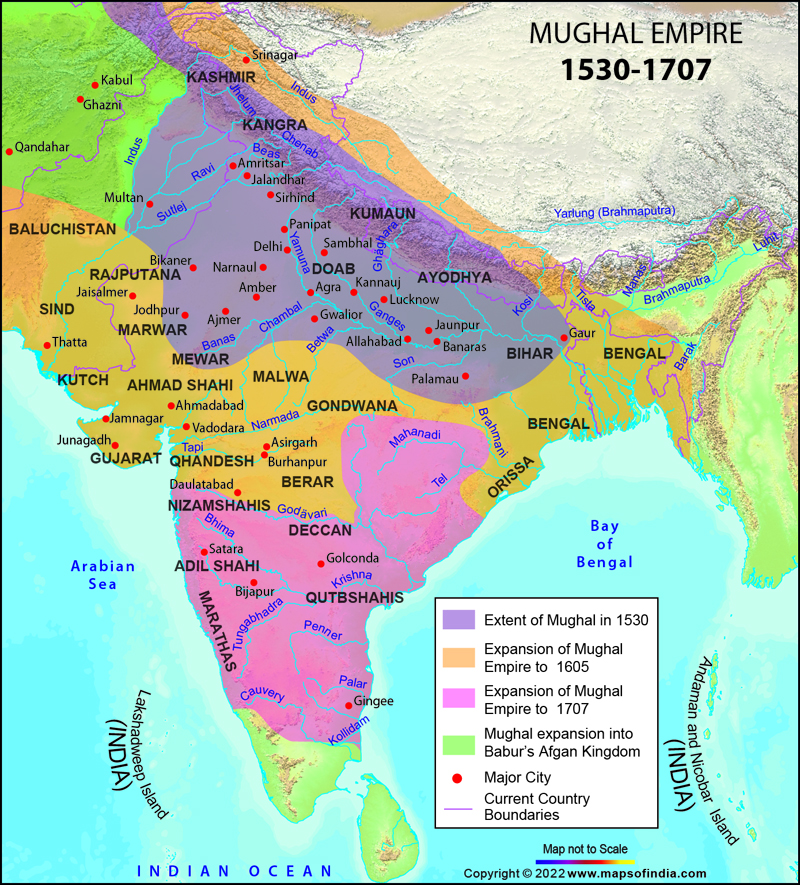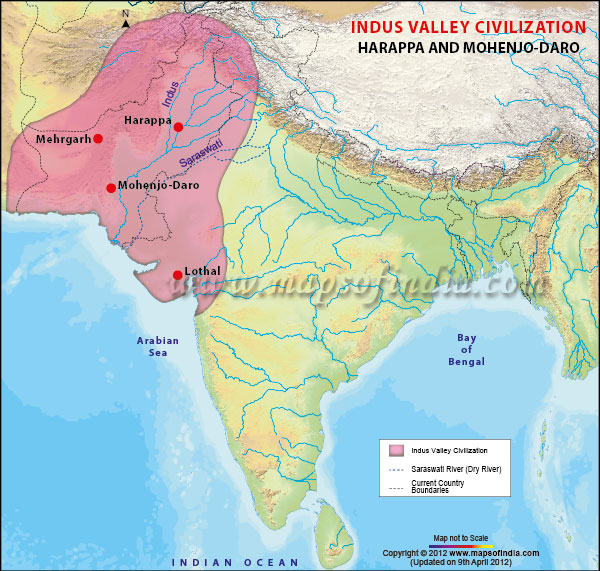Mysore conquest
- Mysore province was initially part of Vijayanagara Empire created by 'Sri Krishna Devaraya' with Srirangapatnam as capital. Mysore was under the control of Nayakas (Governor of Vijayanagara of Mysore region are called Nayakas).
- Wadeyar; a nayaka declared independence after the end of Vijayanagara Empire. From 1610 to 1947 Mysore was ruled by Wadeyar dynasty, of course, there were two interruptions in the rule from 1761 to 1799 by Hyder Ali and his son Tippu Sultan and 1831 to 1881 by British.
Hyder Ali
- Hyder Ali ruled Mysore from 1761 to 1782. Hyder Ali had very humble background was very poor and illiterate person. He joined the wadeyar army as a petty soldier. Due to his efficiency and his skills displayed in various wars, he was appointed as 'Faujdar of Dindigal' (Dist level post). At Dindigal, he started a modern arsenal and increased his muscle thereafter dismissed then Wadeyar King 'Chikki Krishnaraya Wadeyar' and establishing Muslim rule in Mysore province. King was not killed but put in a sort of house arrest.
- During Hyder Ali reign Mysore region was expanded in leaps and bounds. He followed a policy of annexation fighting many wars in the process of conquering. He conquered Krishna-Tungabhadra region from Marathas, Rayalaseerna up to Tirupati from Nizams and other territories in Tamil Nadu also. He was a man of religious tolerance. He gave large endowments to Balaji temple in Tirupati. He continual printing of Shiva and Parvati on the coins as done by Wadeyars earlier. Somehow there was a dispute between Hyder Ali and British which led to two Anglo-Mysore wars.
First anglo Mysore war
- This war was fought from 1766 to 1769 among Hyder Ali and then Madras governor 'Lord McCartney'. Many battles were fought either losing or winning by one another. Both parties got exhausted and war concluded with 'Treaty of Madras' which says Prewar status quo to be maintained. After this, there was a certain relief in either party till next war was fought.
Second Anglo-Mysore war
- This war was fought from 1780 to 1784 among Hyder Ali and First Governor General 'Warren Hastings'. During the course of war in 1782, Hyder Ali died due to Cancer, a natural death. So his son Tippu Sultan continued war. Both parties again got exhausted and war was concluded with a ceasefire 'Treaty of Mangalore' which says to maintain pre-war status quo.
Tippu Sultan
- Tippu Sultan inherited the throne immediately after the death of his father and came to power in 1782 ruled till 1799. He was the most formidable enemy to British. He gave tough resistance to British than any other ruler. So he is popularly known as 'Sher-e-Mysore' (Tiger of Mysore).
- He abolished Zamindari system; introduced a new calendar; and also printed a new gold coin (Mohur); also, set up modern industries; a network of highways was built especially in Malabar region. He suppressed all Polegars (warlords); [Polegars are initially maintained Vijayanagara rulers in RayalaSeema region. Polegars are expected to maintain a certain army and these shall fight for the king. Initially, this was good but of late there were differences between each polegar and group rivalry, started that is factionalism. Each group attacked either of them in the process of retaliation. This is even now flourishing in this region].
- Mangalore has become chief port of export for Spices of Kerala and Sandalwood of Mysore region. To promote foreign trade he sent his envoys to China, Iran, Turkey, Burma, France and etc.
- He maintained very cordial relationships with French of Mahe as well as France. With their help, he started modernizing and strengthening the military. He became a member of Jacobin political party which in 1789 led French revolution. Being a monarch he didn't support a co-monarch but he supported people of France. He also celebrated the triumph of revolution by planting a tree named 'Liberty' at Srirangapatnam.
- He was a literate and scholar in many languages, unlike his father. He had a great library in his palace where books of various languages across the world are shelved. British were astonished by his intellect skills and books were little later taken away by them to Calcutta.
- He was also a religious tolerant man just like his father. He followed a policy of secularism. One best example was he had built his palace in the vicinity of Ranganatha temple (built by Vijayanagara rulers) so that the chanting of sanctum santorum could reach his ear in the dawn which is very good way to start a day. He also gave huge donations to Sringeri Sarada temple which were looted by Maratha kings later. Somehow there were no friendly relations between Tippu Sultan and British Which led to two more Anglo-Mysore wars.
Third Anglo-Mysore war
- This was fought from 1790 to 1792. Tippu Sultan on one side and another side a confederation of Govern general Lord Cornwallis along- with Nizam Ali, Nawab of Nizam and Maratha King were fighting.[Nizmas were supporting British its - their territory was occupied by Hyder Ali and same with Marathas. This has been the with every ruler of Indian states who were rivals among themselves non-supporting to each other which turned advantage to British]. Tippu Sultan gave tough resistance but could not withstand finally defeated. Then war was concluded with a 'Treaty of Sriranzanatnam'. This is no status quo treaty but a humiliating treaty to 'Sher-e-Mysore'.
- Few provisions were
- 50% of the kingdom was taken away and shared among the confederation. [Krishna-Tungabhadra region to Marathas, Rayalaseerna to Nizams and rest of remaining territory in 50% like Baramahal in Tamil Nadu were taken by British].
- 3 crore rupees of war indemnity shall be paid by Tippu Sultan in easy installments and as a guarantee, his 2 sons were taken to Bengal.
Fourth Anglo-Mysore war
- Tippu Sultan was not a person of cowardice. He doesn't want to sit pressing his hands so he retaliated so as a result a war was fought in 1799. Governor General Lord Wellesley wants to exterminate Tippu Sultan completely as his any existence further would bring perils to British.
- Reason British felt danger was because his relation with French and other Kings. Tippu had great international relations. He wrote letters to all anti-British rulers around the world. He wrote to Afghan ruler 'Zarnanshah' and also to Napoleon Bonaparte inviting them to India. If they had come British would have reduced to debris.
- In this war, Tippu was not only defeated but also killed at Sri Rangapatnam. After his death, Wellesley out of huge empire of Mysore, Empire created a small state comprising Mysore, Srirangapatnam, and neighboring areas and made (Chikki Krishnaraya Wadeyar III as King. This area was very insignificant and rest territory 90% was annexed to British sovereign. Original ,territory of Wadeyars was given back to them but not the conquered parts. By doing so, British claimed themselves as righteous rulers. They only got rid of de facto and usurped rulers but not the genuine inheritors.
- This transfer of territory was not unconditional and that is never British policy. Here Wadeyars were asked to sign a subsidiary alliance. In 1799, CK II signed and got Mysore territory.
Subsidiary Alliance
- This is an imperial scheme developed by Lord Wellesley in the year 1778 and primary objective was to bring Indian states under the authority of British without waging wars. Certain provisions of this were
- Once it is signed, British shall give complete protection to that signatory state. The powerful military cover is given to Wing from any revolt or invade.
- In order to give protection, subsidiary forces are maintained in the capital exclusively for the protection of the signatory state.
- The entire cost of maintenance shall be paid by the signatory state either in cash to British or equal revenue generating land can be ceded to British. [Nizam Nawab has ceded Rayalaseema region in lieu of cash, so this region is referred as ceded even now].
- Signatory state shall surrender all foreign affairs to British like to wage a war a leave has to be taken from British authority; any treaty shall be through British and may others.
- Foreigners shall not be allowed without permission of British (Fear of Napoleon (who was raising a paramount power).
- To maintain all these things a British officer called 'British resident' shall be stationed permanently in capital. These residents involved in all administrative affairs whereas Kings became puppets.
- First, Nawab to sign was Nizam Ali of Hyderabad in 1798, then Chikka Krishnaraya Wadeyar III in 1799, Sultan Sadat Ali of Avadh in 1801, Peshwa Bajirao II of Maratha in 1802 and etc.
- Finally Mysore state was conquered by British in the span of 30 years.






_by_Usman_Ghani.jpg)



